Freshly launched in the last couple of weeks, the new Coros Nomad watch is built for anyone with a passion for outdoors and the mountains. The first and only Coros watch with a built-in microphone, the Nomad is designed as an adventure companion for logging both activities and memories – but is that enough to put it up there with the best outdoor watches?
What makes the Nomad stand out most from its Coros siblings is that it’s a much more holistic outdoors tracker. In a nutshell, the “Apex is built for mountain athletes, whereas Nomad is built for mountain adventures”, shares Coros Wearable CEO and co-founder Lewis Wu in our pre-launch meeting.
Evidently a team that practices what it preaches when it comes to adventure sport, the Coros founders explained that they wanted a new watch that could act as an adventure journal as the icing on the proverbial cake, alongside the usual sports and biometrics tracking that’s become the standard in outdoor watches.
That being said, the Nomad was clearly made with anglers in mind. There’s a huge amount of fishing data and logging options available. You can log where and when you catch a fish, including its size, weight and species.
It allows you to mark down your favourite catch locations and even tide times for the next time you’re in the area. The watch aims to improve your chances of catching a bite during key fishing times, with a best fishing time suggestion for those in new areas.
As with all sport profiles, you can mark waypoints and points of interest to circle back to. There are heaps of angling profiles, including fishing via: surf, boat, flatwater, kayak, offshore, inshore… the list goes on. Even the camo colourways of khaki green, taupe brown and dark grey are reminiscent of riverways.
Pros
- Excellent turn-by-turn colour mapping
- Sharp and clear MIP screen
- Impressively long battery life
- Clear audio recording
Cons
- Aesthetics look cheaper than the watch is
- Turn-by-turn navigation blocks zooming when approaching turns
| RRP: | £319/$349 |
| Weight: | 61g with silicone band; 49g with nylon band |
| Battery life: | 22 days daily use with sleep, daily stress, HR measurements; 50hrs all systems GPS; 34hrs dual frequency + all systems GPS |
| Storage: | 32GB |
| Materials: | Polymer and aluminium alloy bezel and backing; hardened mineral glass screen; silicone or nylon band |
| Display type and size: | MiP touch screen, 260px by 260px, 33mm (1.3in) |
| Waterproof rating: | 5ATM (50m) |
Why are we testing the Nomad on LFTO then? Because angling lovers aside, the Nomad is a brilliant outdoors watch in its own right. Its features will suit adventure athletes of all shapes and sizes.
While models like the Pace, Vertix, and Apex clearly position themselves as athlete-focused at the core, Coros describes the Nomad as “your go-anywhere, do-anything adventure watch”. Those willing to not get too hung up on semantics will quickly discover that there’s a huge amount of performance crossover from other models.
Essentially, the Nomad is a more versatile extension of other Coros watches, with functionality both to help fulfil off-grid adventures and more serious athletic goals. On the adventure side of things, I found the crisp MiP screen and turn-by-turn colour mapping a real highlight.
There seems to be no adventure too long for the Nomad either, with a colossal three-week battery capacity that just makes life easier. The unique voice pin feature is a fun add on, but whether that adds value is up to individual preference.
How I tested
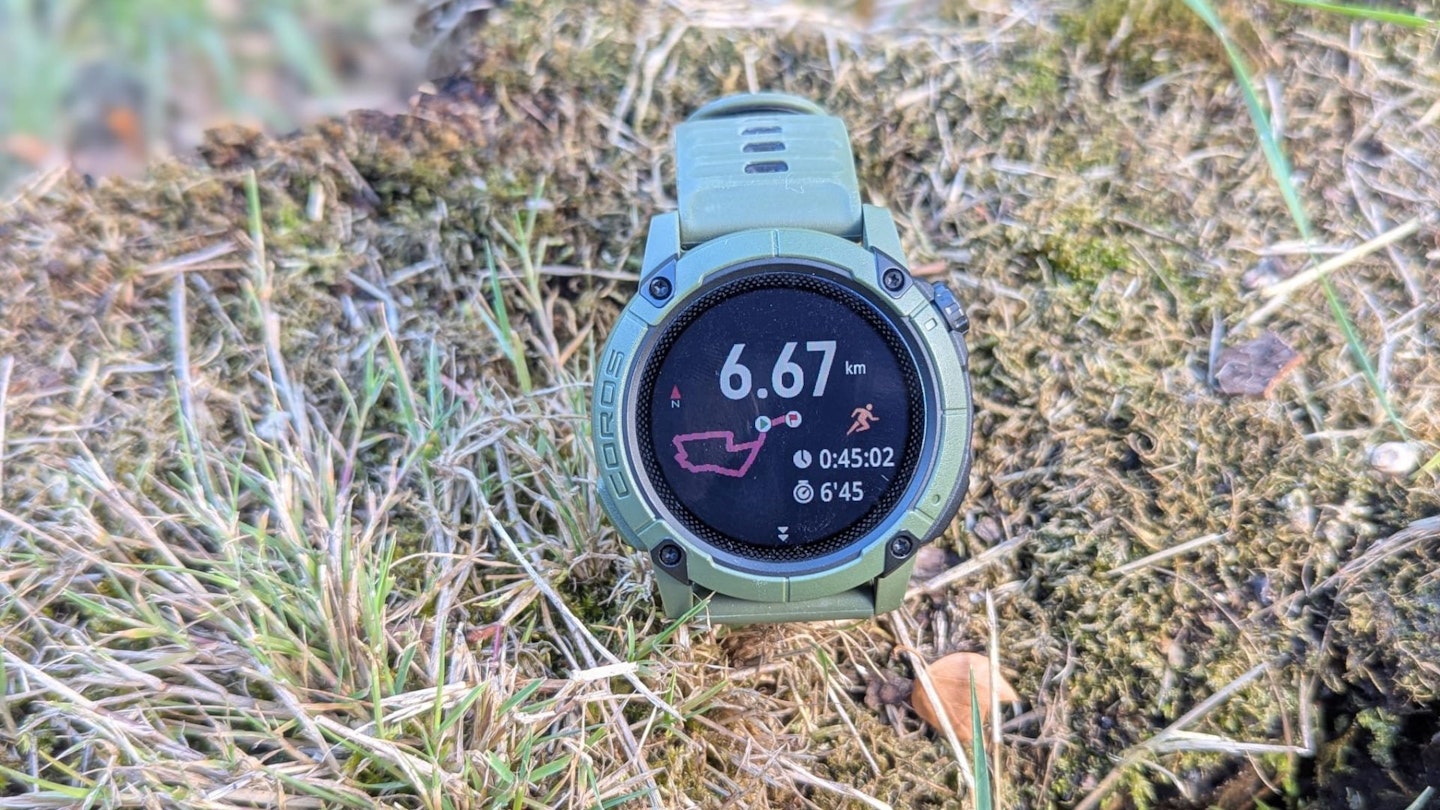
I tested the Nomad out on the trails, lakes and roads of southern France. I took the watch on trail runs of varying distances in both the 40°C summer heat and early morning cool, often using it to map out and explore new routes through nature areas.
The Nomad led me on hikes over technical terrain in some of the most picturesque spots in southern Europe. All the way from sweltering runs to icy cold swims in the ancient gorges and the vast azure lakes of Provence – I wanted to find out just how versatile the watch could be.
Alongside a control watch, the Nomad kept me company as I made the most out of the beautiful yet brutal European summer in some of the most rugged, remote and breathtaking spots imaginable.
A summer to remember, I tested the voice-pin and image-pin features to immortalise the highlights of each adventure. So, let’s get into the nitty gritty…
Design and screen
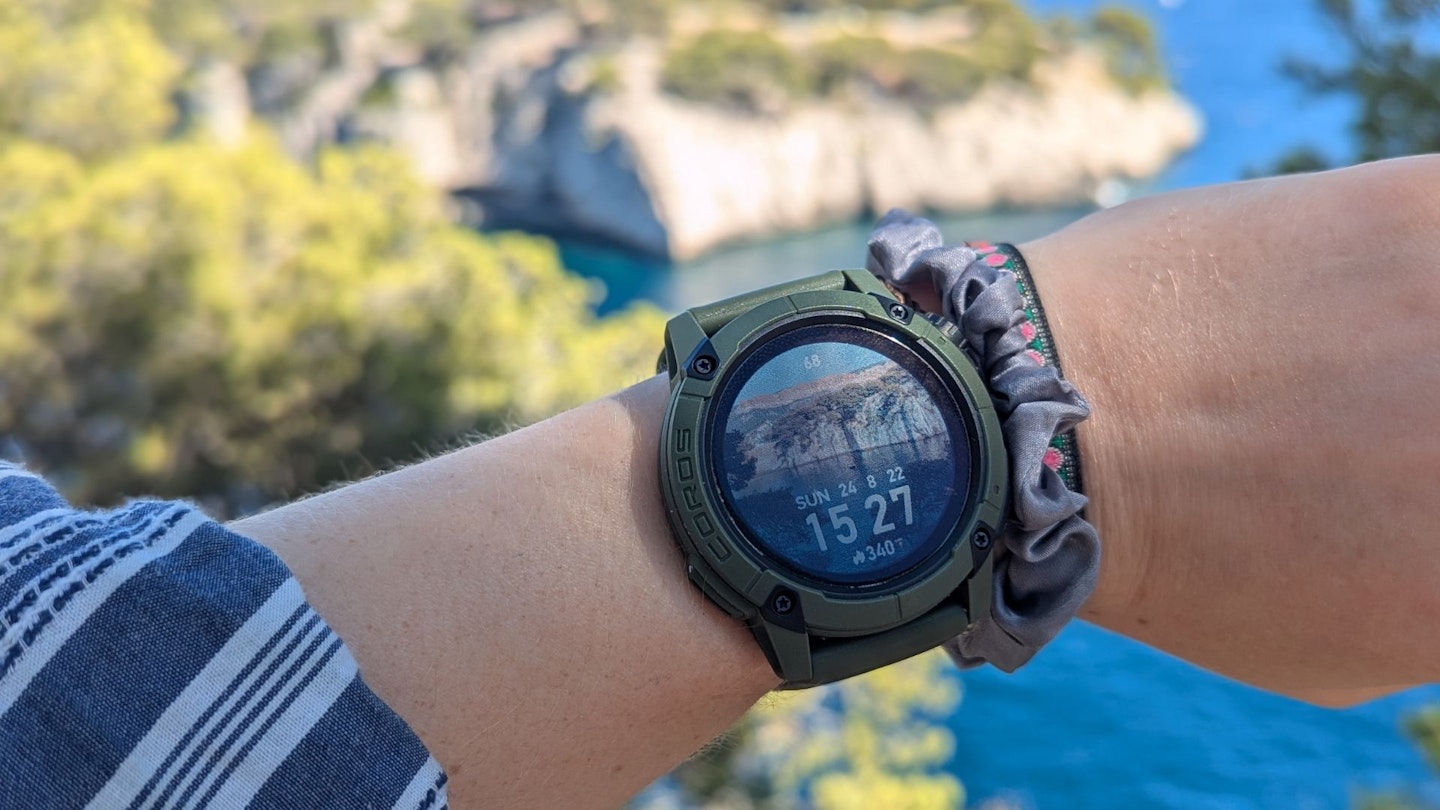
The Nomad’s screen is a 33mm (1.3in) memory in pixel (MiP) touchscreen that’s been upgraded from the previous Coros models. The choice of MiP over AMOLED equates to a longer battery life, yet still felt vibrant enough in outdoor settings, which I particularly appreciated during sunny testing runs and hikes.
The MiP display won my heart quickly when compared to my older Polar Grit X Pro watch with its always-on AMOLED screen, which quickly sucks battery life even when not in use (though a lot of watches now allow you to turn off the ‘always-on’ setting).
Watch faces can also be easily swapped out for a handful of designs available to download on the Coros app. There’s not as much choice as on Garmin, but it’s still a nice selection with the option to customise the screen with your own image. I was dubious that this feature would add any value, but a recent sunny hike in the Calanques of the French Riviera quickly put paid to any doubts. (see picture above).
Unfortunately, there’s just something about the matte finish that makes the casing look a little plasticky and cheap to me. Looks can be deceiving though, since the bezel and backing are reportedly made from a “high-strength” dual-layer polymer and aluminium alloy. At 61g on my scales, it’s a lightweight ensemble that doesn’t look too oversized on my wrist.
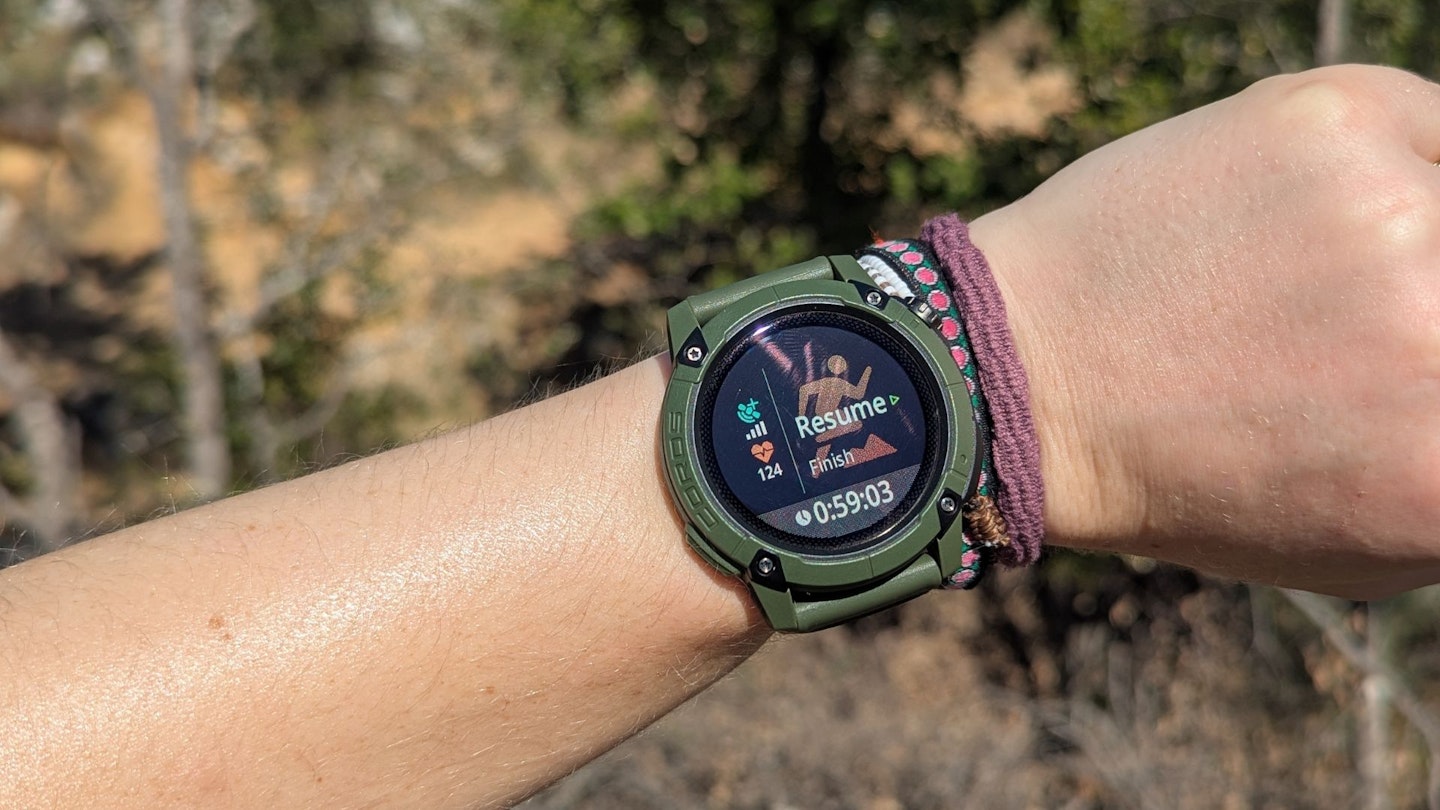
Though the Nomad has complete touchscreen capabilities, there are also three physical navigation buttons (for when sweat gets in the way of dexterity) set on both sides of the screen: an action button, a top dial and a back button.
The top dial does most of the work and is scrollable, so it's helpful when flicking through lots of real-time data like daily activity, training load and status, recovery, sleep, stress, heart rate variability (HRV), weather, elevation, heart rate and more.
Meanwhile, the new left ‘action button’ is customisable and can be programmed as per different sport profiles. This includes either adding a shortcut for the next lap, adding a pin or switching watch face view.
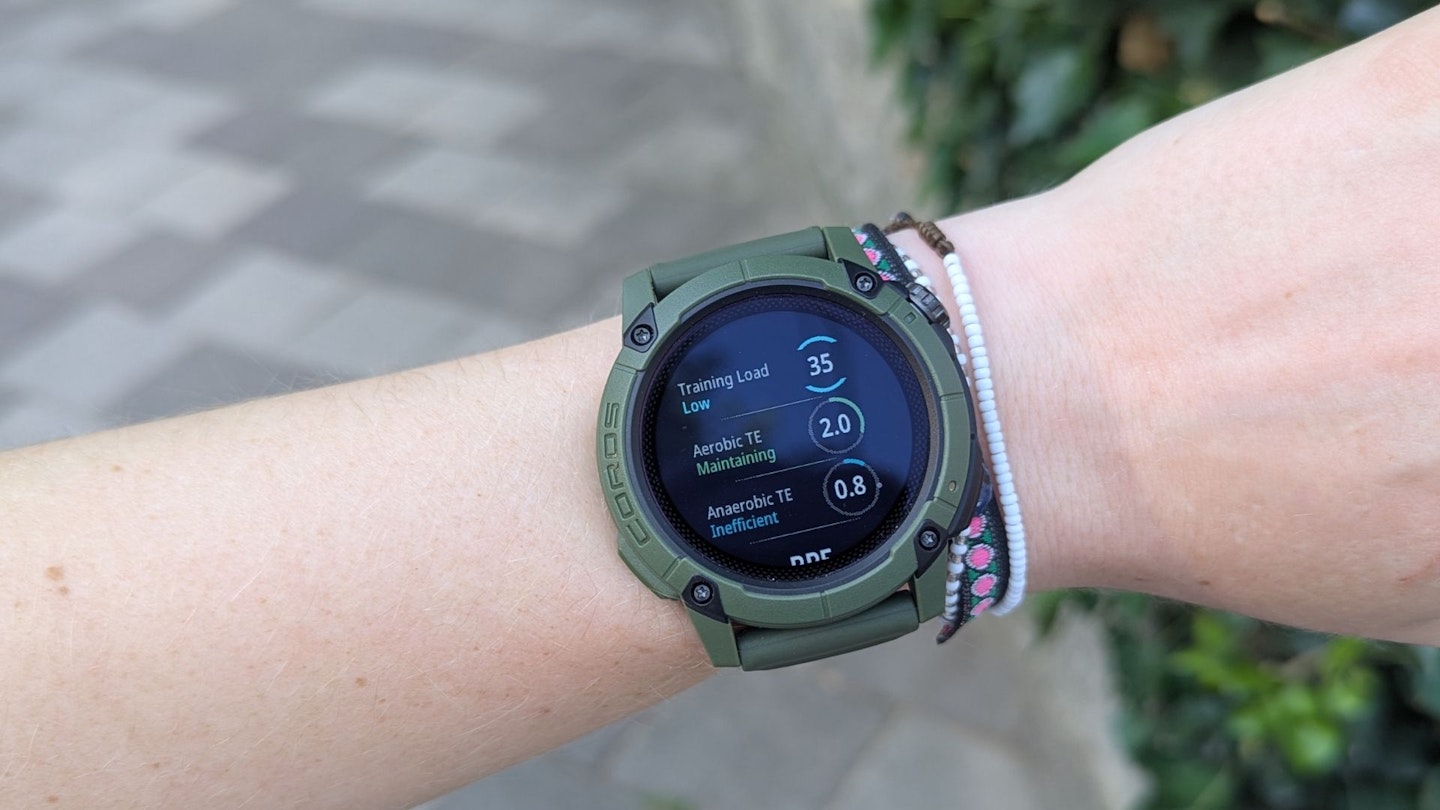
The in-watch performance widgets offer a quick look into current activity and fitness trends, as well as biometrics. The selection shown can be personalised to match the metrics most important to you.
As there’s no kayaking profile and the azure blue waters of the gorges nearby were calling my name, I was able to quickly create a ‘custom’ activity with GPS, distance, calorie, and time tracking that I pinged straight to the watch for use. That’s just one example of the multitude of options for customisation, which is a real plus on my books.
Meanwhile, outside of the watch’s ecosystem, there’s much more detailed analytics and reporting available when syncing to the Coros app, which I was glad to find happens impressively quickly with Bluetooth activated (unlike other watches).
GPS accuracy
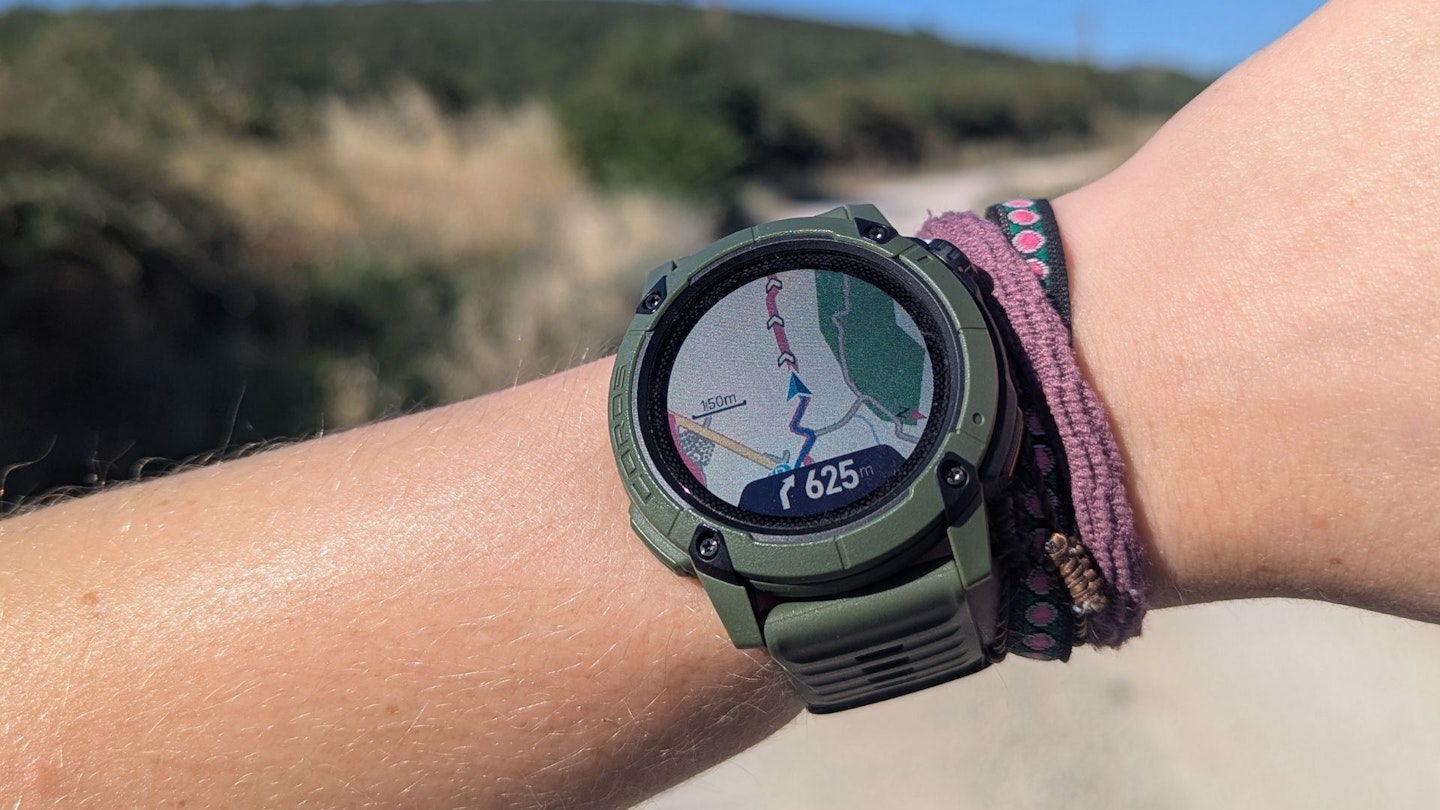
During my month’s testing period, I took the Nomad out on the trails, roads and riverways of southern France. In order to ascertain accuracy, I tracked activities in parallel to a trusted control watch.
When it comes to finding GPS, the Nomad unsurprisingly really excels. It’s able to pick up GPS signal almost instantly, much faster than my other devices. On the go, the Nomad maintains a strong GPS signal even in the thick of nature.
When comparing distance and pace to my control watch, the distance was always spot on, with pace within a 3secs per minute variation. It’s easy to switch through to the on-watch map screen while running, which gives you a map view of your surroundings in case you’re having trouble finding your way (more on navigation later).
Battery life
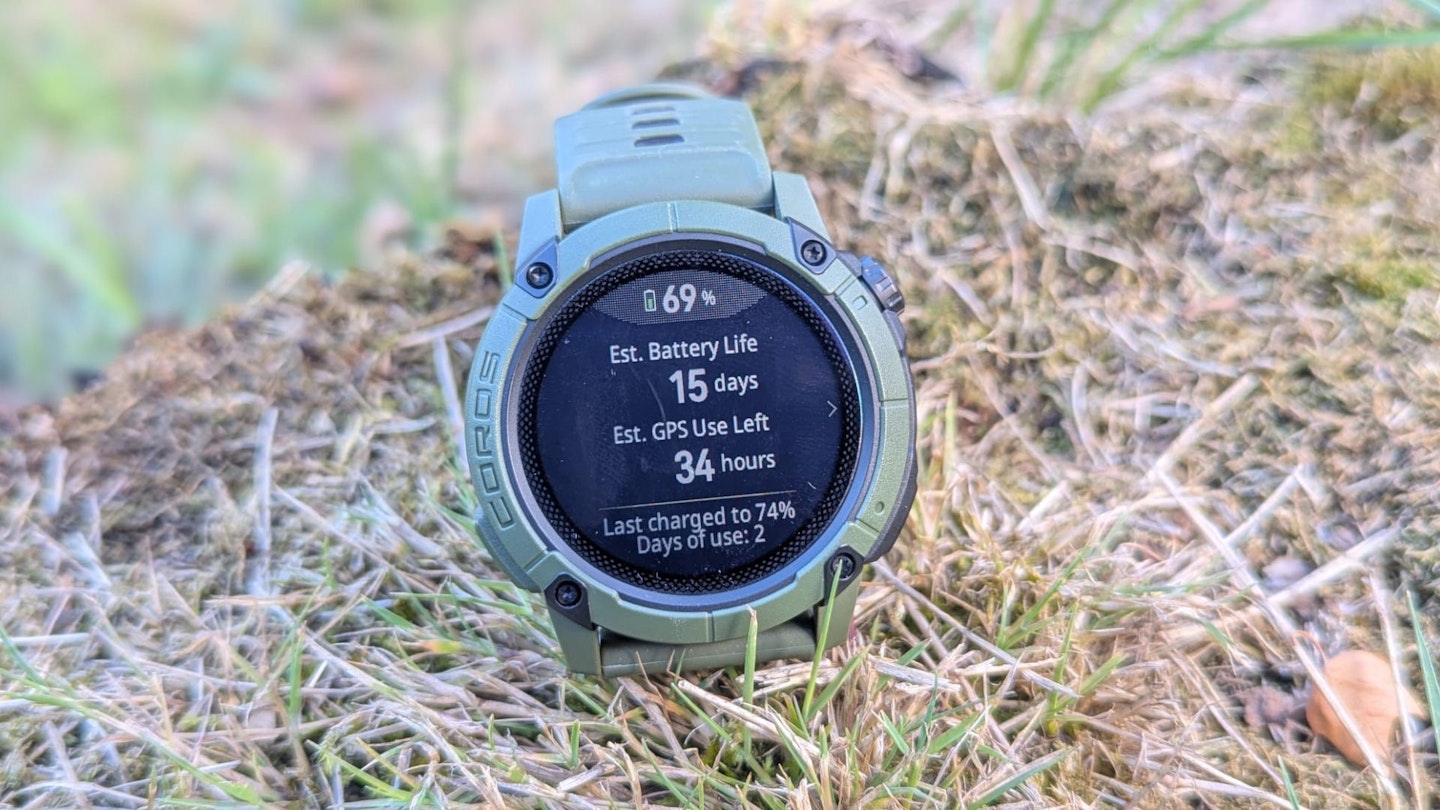
The Nomad’s battery life is thoroughly impressive. One full battery lasted me three weeks of constant use and almost daily activity tracking with plenty of map navigation use. And when it finally came to recharge, the Nomad only took an hour to get back to full juice!
In the meantime, my usual smartwatch had to be recharged twice. Granted, batteries typically wear down over the years, so it’s no real surprise that a brand-new watch will pip my much-loved and weathered five-year-old Polar.
Coros’ battery life estimates are spot-on. They quote 22 days of daily use with sleep, daily stress and heart rate measurements, 50hrs when using all systems GPS, or 34hrs when using dual-frequency and all systems GPS. Ultrarunners, eat your heart out.
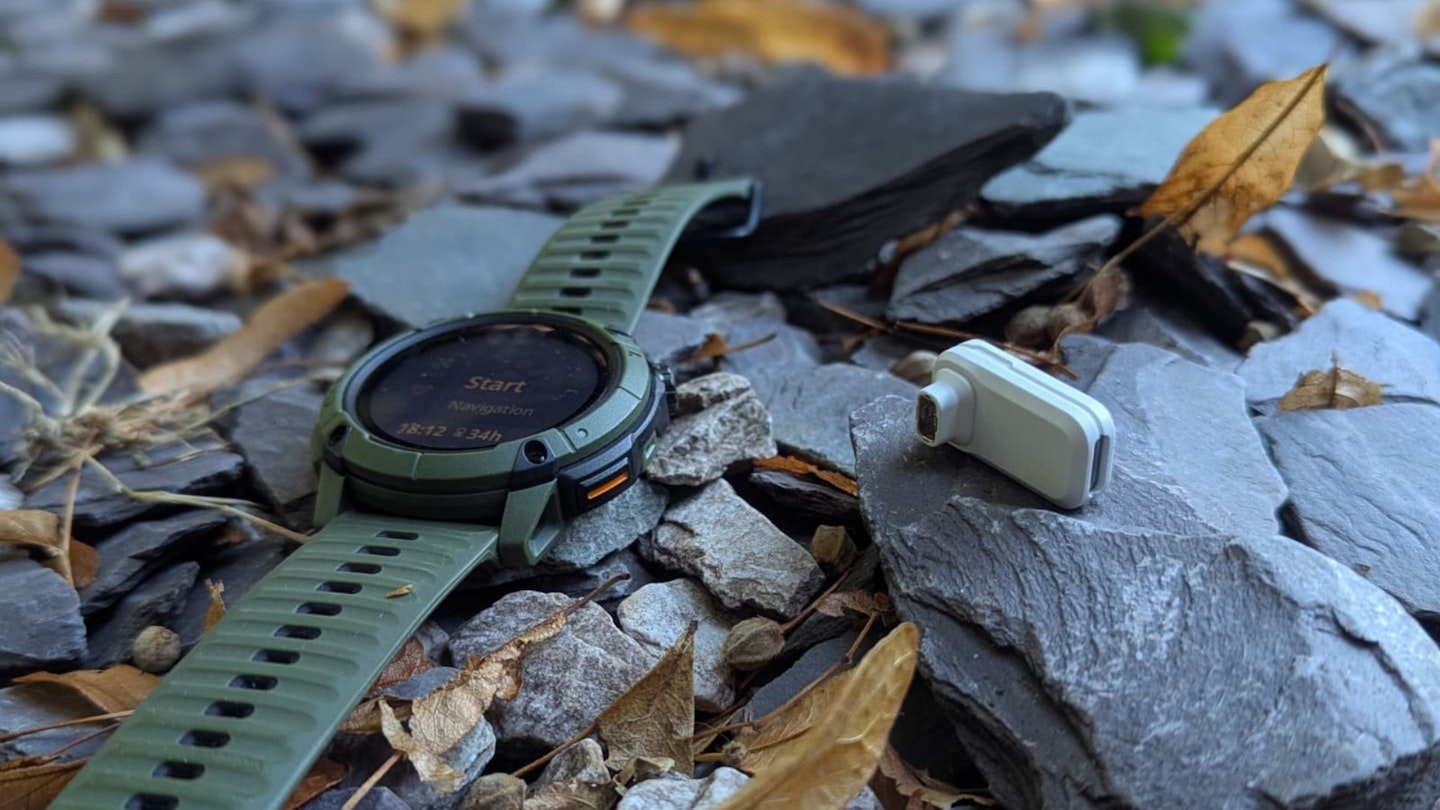
Just as with the Pace Pro, charging is via a small USB-C A2 charging adaptor that clicks firmly into the indented rear port. This port is deeper than other models to allow for a more secure hold after customer feedback. To then plug in the watch for charging, Coros relies on the assumption that the customer will likely have a USB-C charging cable (or several) and plug at home to use.
But if you don’t have a USB-C cable, then you can apparently reach out to the support team who will send you one. To make sure the adaptor doesn’t get lost, it can be popped into the provided little silicone mould attached to a keychain, for on-the-go charging as and when you need it (not often, if the battery life is anything to go by).
Navigation and mapping
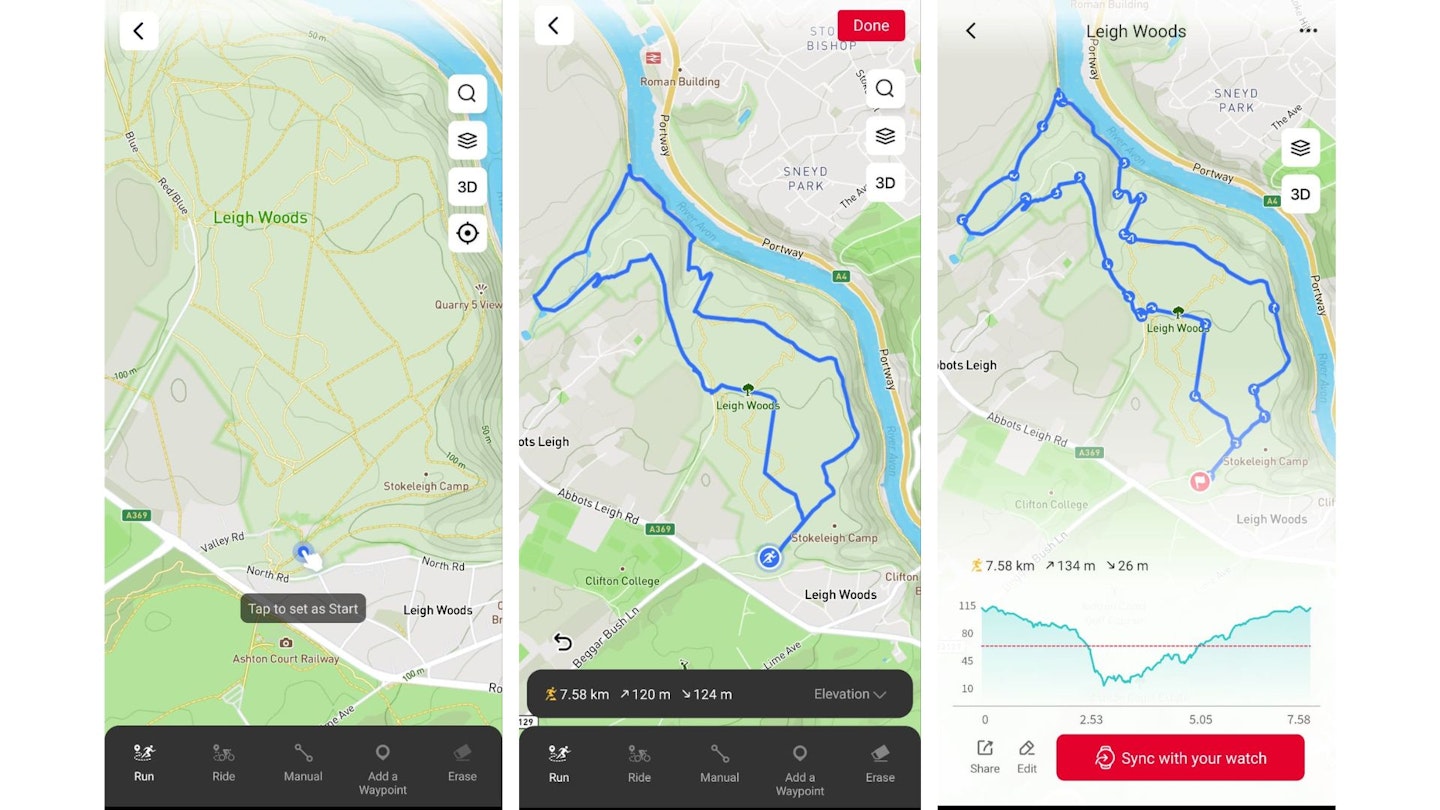
The Coros app provides intuitive mapping functionality that’s simple to use and then ping right to your watch ahead of a run or hike. The route can also be edited during an activity if you decide to alter your path. There’s connectivity with apps like Strava or Komoot, but I found that the Coros system provided everything I needed.
For off-grid navigation, there are also global maps that can be downloaded via the app with a plentiful 32GB storage within the watch itself. While these features are nothing new to the Coros range, a new function found in the Nomad is the ability to check the weather and save up to five locations for weather updates (when synced to the app).
This includes temperature and real-feel, as well as chance of rain, wind strength and forecasted weather for the next six hours, plus for the coming week. Living in a hot location, I particularly appreciate the UV index metric to know how best to prepare and protect myself for sunny runs.
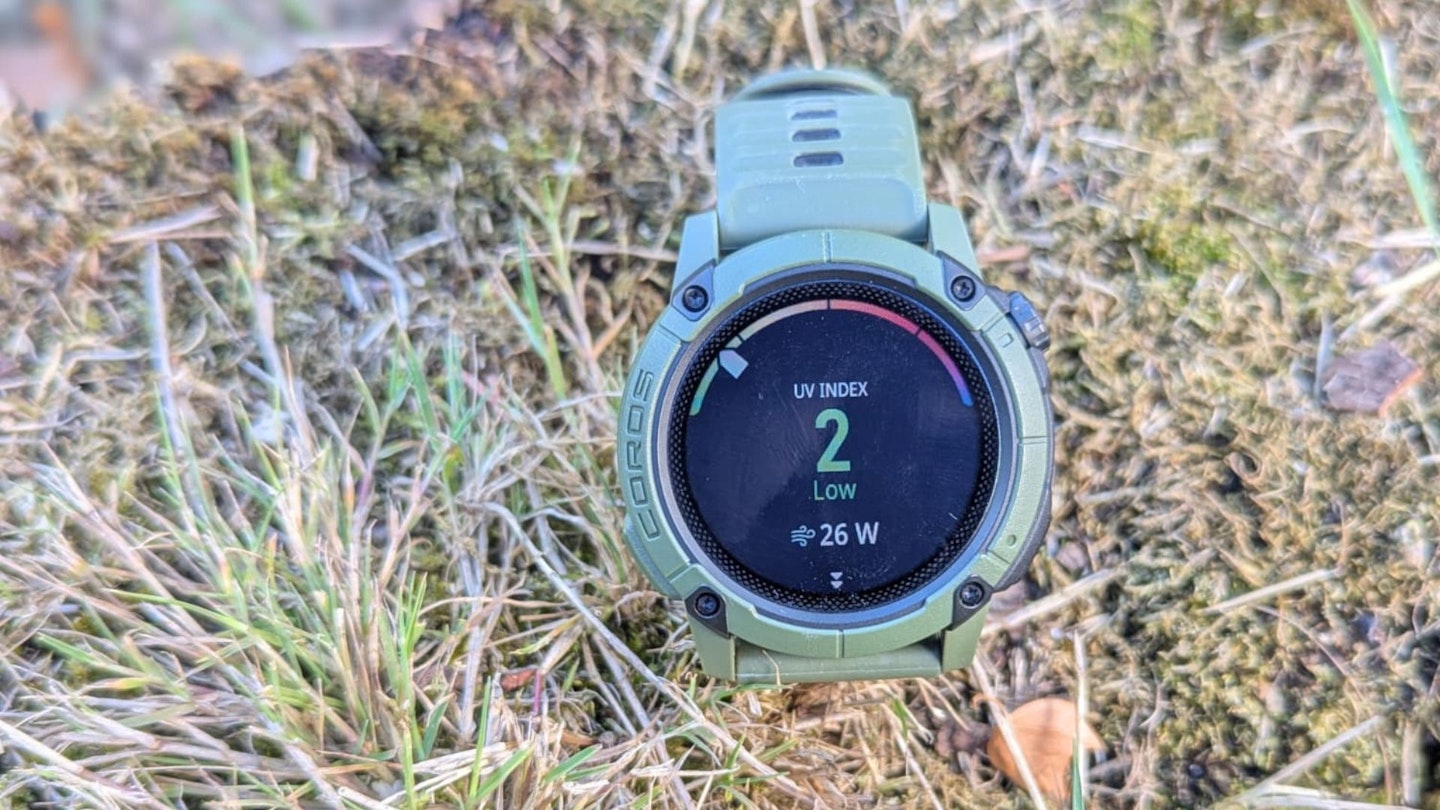
During activities, the turn-by-turn navigation works well and I found the colour screen with place names super clear to decipher while in motion. My only gripe is when the nav arrow pops appears when coming up to a turn, the watch screen essentially locks and you cannot zoom in or out to check where you are. Coros seems pretty responsive to issues, so hopefully this is something that can be sorted in future updates.
There's a back-to-start function to avoid getting lost, while the only new update from other Coros models is the addition of street names to the map. Locations like nice viewpoints or a handy public toilet can all be stored in the map via a pin, which can also have audio and visual data added (more on this later).
There are all the usual performance metrics provided after an activity, including speed, heart rate, elevation, calories burned, training effect on fitness and stats from each lap. Meanwhile, graphs and satellite maps help to better visualise the data.
Sport profiles and biometric tracking
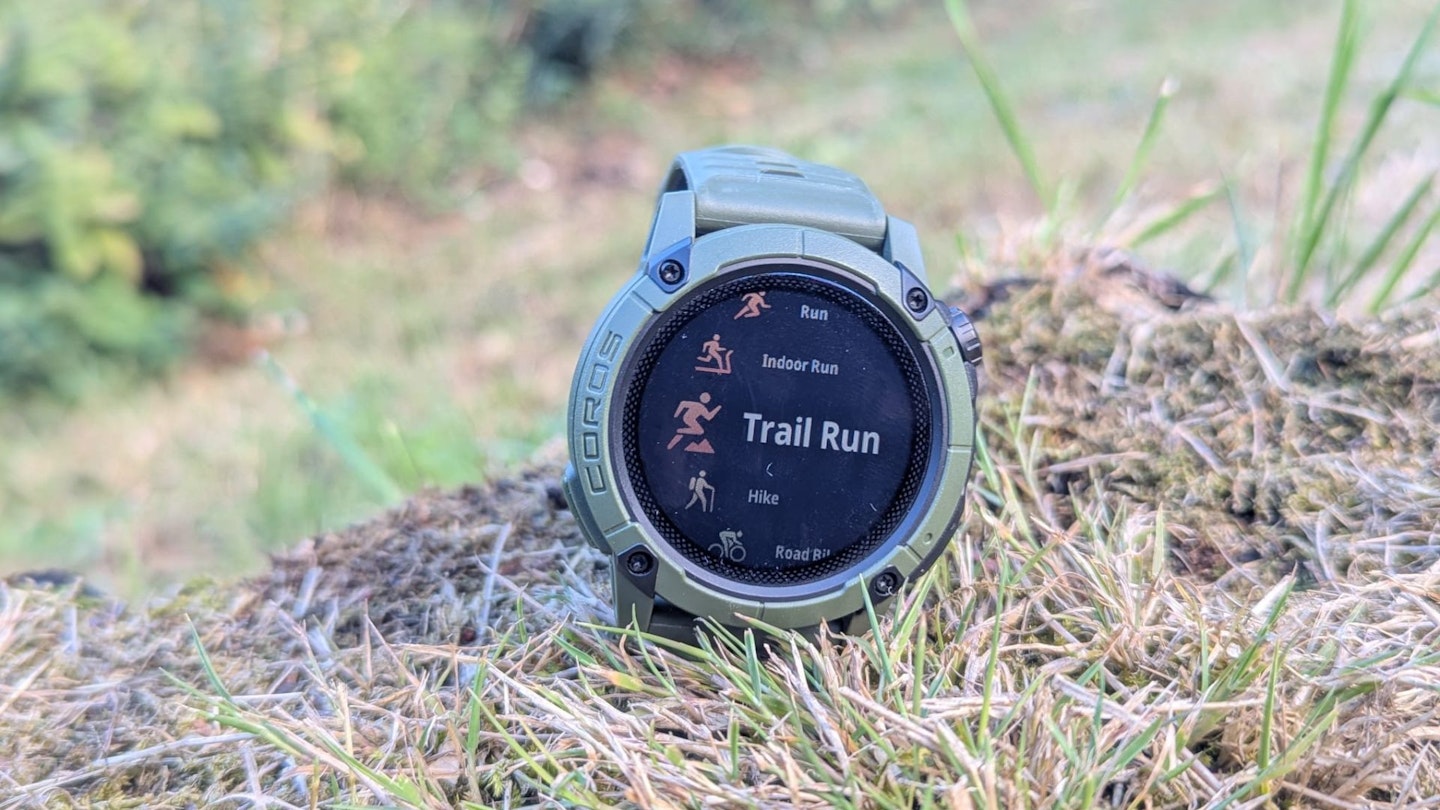
Like the Pace Pro and Vertix watches, sports tracking is accessed via the top right toggle. The watch is touchscreen, but I find it easier to stick to physical buttons during sweaty workouts.
There’s the option to follow one of the free training plans in the Coros app, as well as pre-made workouts like intervals. I like the option to set an activity alert to a specific sport profile, which would allow an athlete who trains to heart rate zones to receive alerts when they stray over a certain limit. There’s also alerts possible for distance, pace, cadence, nutrition and power metrics.
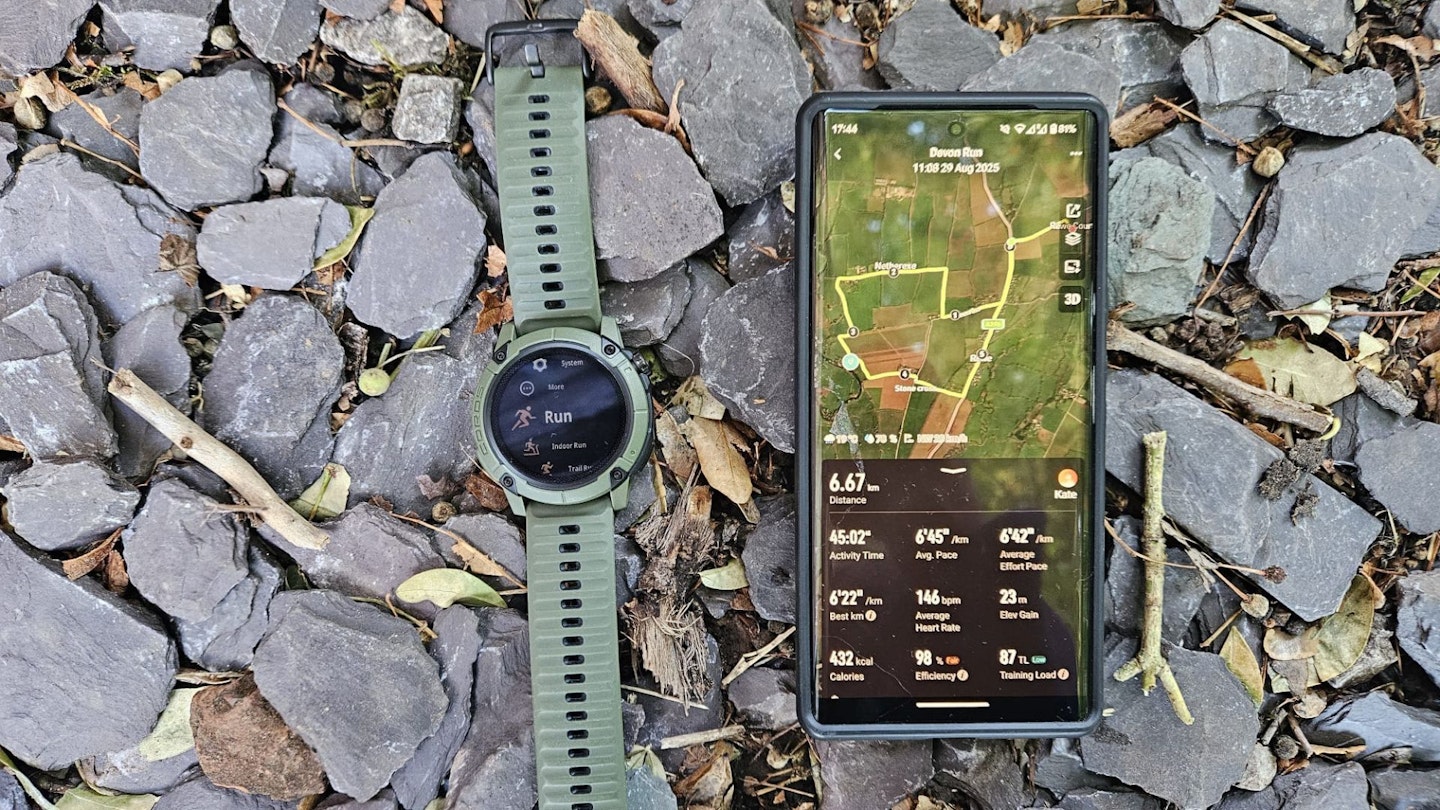
For every outdoor activity I recorded, the GPS loaded within 10secs. There’s the option to completely customise each sport profile so you can prioritise the data you’re most interested in while tracking. The original set-up on activity pages is numeric overload for me, so I simplified my run display to 3-4 metrics per page, which made it far easier to decipher progress while on the move.
I found that sleep and overnight HRV tracking showed similar metrics to Oura, Garmin and Polar when worn together. Sleep quality analytics include proportions of awake, REM, light, and deep sleep each night, advising on normal ranges and patterns over time.
Similarly, Coros uses your data to calculate a normal range for HRV, which can be used to find signs of overtraining, fatigue or even the beginning of illness. In all, the personal biometrics tracking seem in line with other smartwatches out there, and is certainly useful for those interested in the data.
Voice pin function
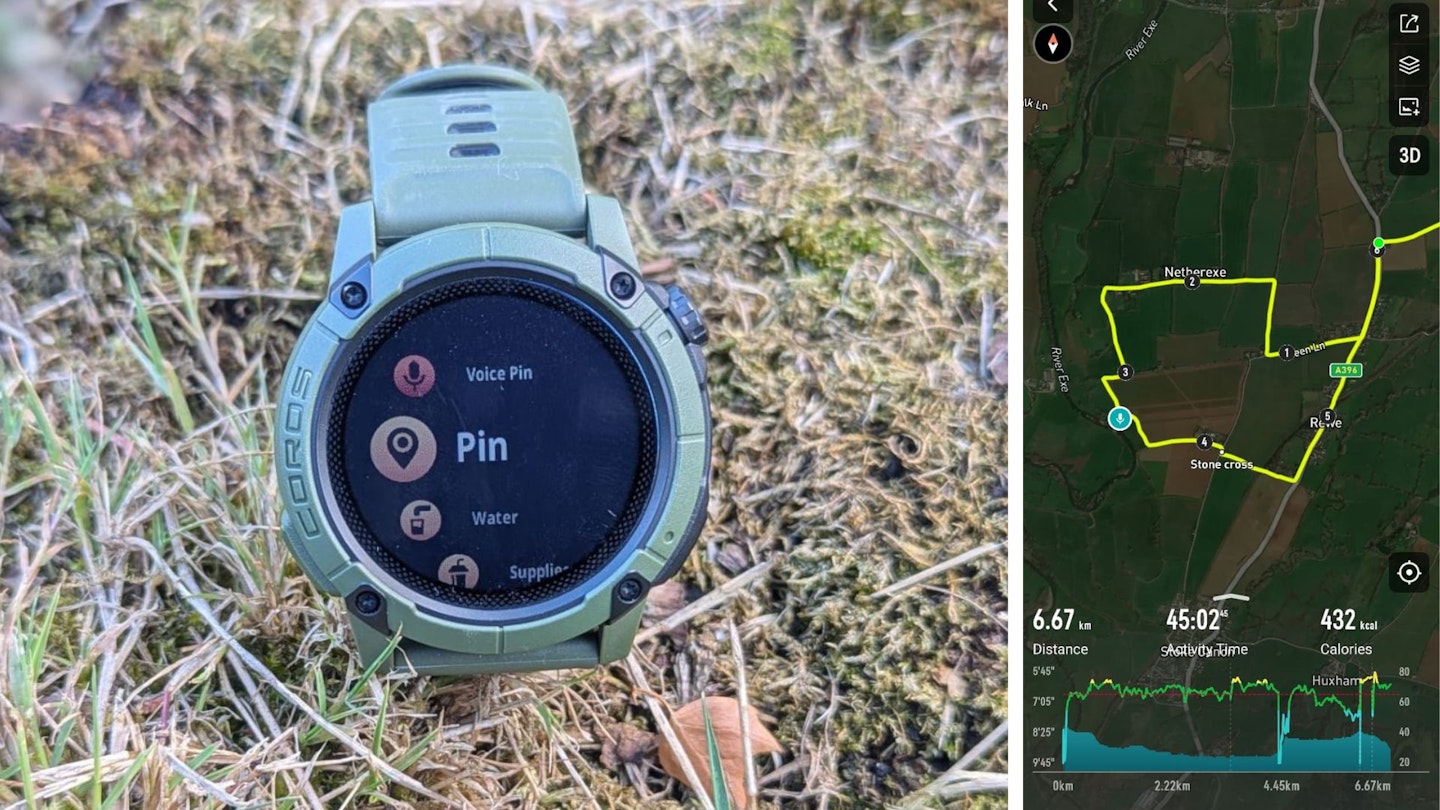
The voice pin function is the big USP of the Nomad watch. To use this during an activity, you have to set up the activity button as a shortcut to the voice pin function, and this has to be done for each individual activity.
After that, all it takes is the press of a button to record an audio memory, which is then registered and can be listened back to via the app. The recording is also automatically transcribed – a nice touch. There's no speaker on the watch itself, but the audio recording function is super clear and loud.
Other pins can be added in-activity or after the fact, including pins for water spots, supplies, hazards, toilets, shelter and campgrounds.
Adding images and videos onto a pin in the location they were taken is done via the app. Activities and memories are shareable through a link generator, including a snazzy 3D flyover view.
In terms of connectivity, the Nomad supports sensor pairing via Bluetooth (not ANT+) for your heart rate straps, power meters and speed/cadence sensors. Coros has also linked up with GoPro to enable camera controls via the watch.
Coros features unique to the Nomad
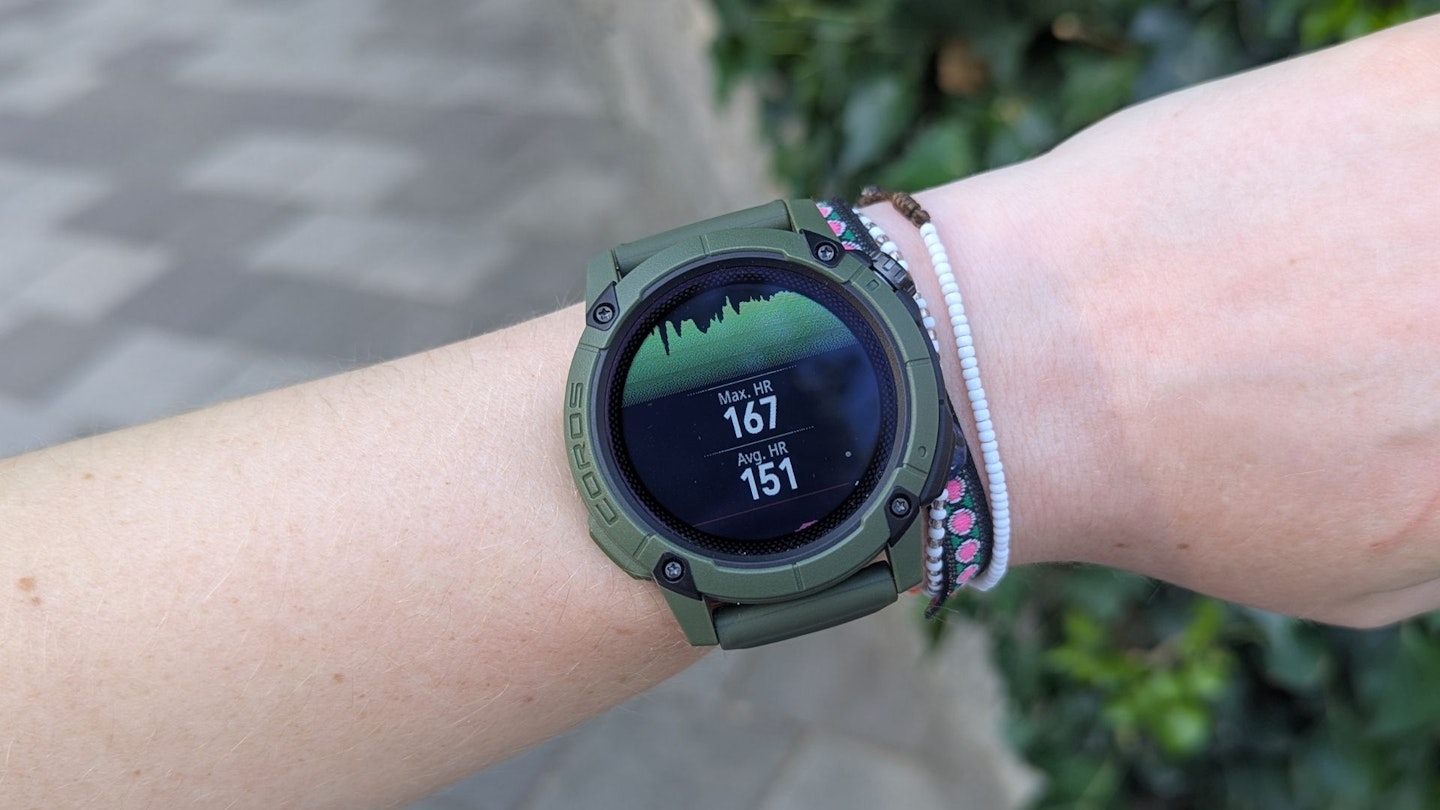
-
Ambiq Apollo 510 Processor: A faster and more powerful processor, which mainly improves the panning and zooming on maps during navigation.
-
Screen made from hardened mineral glass: A new process that’s designed to be more scratch- and crack-resistant. Coros says this should be more robust and tougher than sapphire, with a slightly raised bezel to protect the screen.
-
Dual-mic set-up with noise reduction: The first Coros watch with an integrated microphone for clear audio recordings. The mic can be used to save voice pins and use commands when saving locations.
-
New ‘action button’ and button layout: Based on the feedback from Apex and Vertix users, the action button has been set onto a different side to the other buttons for better dexterity. The action button turns on the screen backlight, switches between map and data screens during an activity, and can be programmed as a shortcut to the user’s most-used features.
Verdict
As you can tell, the Coros Nomad offers a huge amount of data tracking, navigation and adventure journaling.
As a runner and hiker, what makes it stand out from other watches for me is the excellent battery life and crisp and clear navigation.
Features like voice-pin and extra sports profiles are nice, but more like the icing on the cake and for me, added no extra value.
At £319 ($349), it’s an excellent value smartwatch with heaps of training advice and support.
Looking for something more lightweight for past-paced adventures? See our list of the best running watches.
About the author

Kate Milsom was previously a digital content writer for Live for the Outdoors, but now works with us as a freelance gear tester. In her career as a specialist sports journalist, Kate has worked with industry-leading titles including 220 Triathlon, Cycling Plus, Road.cc and Cyclist. Prior to this, Kate studied English literature and French at university, then got the outdoors bug and never looked back.
She's an accomplished athlete, too, having competed in multiple marathons, ultramarathons, half-Ironmans and swimruns.


